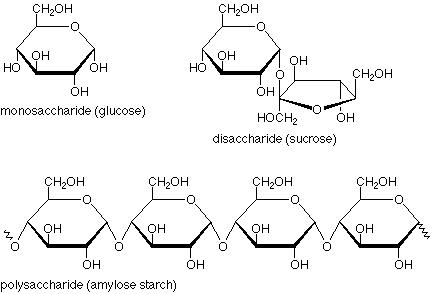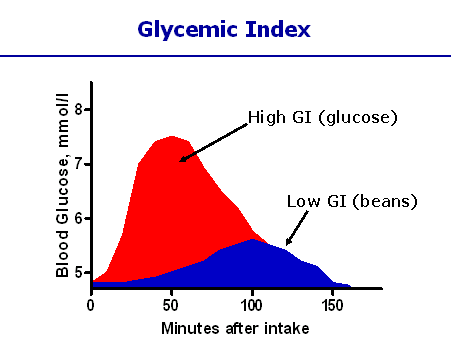The basics of how carbohydrates can affect your health and performance. As the Yiddish proverb goes, “If you are bitter in the heart, sugar in the mouth will not help you.” To put it another way, if your blood triglycerides are elevated, you might want to reconsider that cola.
What are carbohydrates?
Carbohydrates are organic molecules typically classified according to their structure. And, structurally speaking, there are two types of carbohydrates: simple and complex.
Simple carbohydrates are smaller, more easily processed molecules known as mono- and disaccharides since they contain either one sugar molecule or two sugar molecules linked together.
Complex carbohydrates, on the other hand, are called polysaccharides since they have more than two sugar groups linked together.
Monosaccharides are the simplest form of carbohydrate and cannot be broken down any further since they contain only a single sugar group. Oligosaccharides consist of short chains (di-, tri-, etc) of monosaccharide units all put together. And polysaccharides are long chains of monosaccharide units all put together.
| Monosaccharides | Oligiosaccharides | Polysaccharides |
|---|---|---|
| Glucose Fructose Galactose Mannose Ribose | Sucrose Maltose Lactose Trehalose | Digestible Starch and dextrins Glycogen Partially digestible Inulin Raffinose Indigestible Cellulose Pectin |
Here are a couple of diagrams that show what some of these structures look like:

Each subtype of carbohydrate has different effects in the human body depending on its structure and its food source, which affect things like:
- How quickly and/or easily the carbohydrate molecule is digested and absorbed
- Which other nutrients are provided along with the carbohydrate source; for example, fat and protein slow down the digestion and/or absorption
- Our perceptions of the carbohydrates’ texture and sweetness
- Enzyme action in the mouth and gut
Why is carbohydrate intake so important?
Carbohydrate consumption can alter energy dynamics and disease progression in the body.
All carbohydrates we consume are digested into monosaccharides or simple sugars before they’re absorbed by the body, regardless of whether the food source is a simple sugar cube or a high-fiber, low glycemic index bowl of oatmeal. It’s just that the “healthier carbs” are digested and absorbed much slower while the “non-healthy” carbs are digested very quickly.
Once broken down and absorbed, these monosaccharides/sugars go to the liver to fill energy stores. After that, they enter the bloodstream and venture out to the other cells of the body. This is when insulin is released to handle this “sugar load” on the body.
See here for simple animation.
Carbohydrates are primarily a source of immediate energy for all of your body’s cells.
As previously mentioned, carbohydrates also cause a release of insulin. A larger insulin response can be beneficial at certain times (like after an intense workout) and not so beneficial at certain times (like before bed).
What you should know
Although the fundamental process of digestion is the same, people differ in their tolerance and handling of carbohydrates. However, carbohydrate type also plays an important role.
When the diet consists of simple sugars and refined carbohydrates (which the body breaks down rapidly), one may notice elevations in blood triglyceride levels, bad cholesterol, and insulin resistance.
On the other hand, carbohydrates that are digested and absorbed slowly, such as whole grains, fruits, and vegetables, can help to control insulin response, energy levels, and body composition. Such unrefined, unprocessed, complex carbohydrate sources may reduce triglycerides and improve one’s cholesterol profile (Jenkins et al 1987). Other benefits of a lower glycemic diet include increased vitamin and mineral intake, increased fiber intake, enhanced satiety, a higher thermic effect of feeding, and blood sugar control (Ludwig & Eckel 2002; Ludwig 2000).
The chart below compares the glycemic response (i.e., the rise in blood glucose levels) between eating a high-GI food (glucose) and a low-GI food (beans). Notice how with glucose (red area), blood glucose rises quickly and peaks shortly after ingestion.
The minimal recommended intake for carbohydrate is 130 grams per day for the general population. The amount of carbohydrate that should be consumed depends on body size and activity levels: bigger and/or more active people need more while smaller and more sedentary people require less. Intake is also dependent on dietary fat and protein intake.
The minimal recommended intake for fiber is 25 grams per day. The optimal amount is around 35 grams/day for women and 48 grams/day for men. Fibre comes in different forms (soluble/insoluble) and is important for satiety, blood fat levels, colon cancer, motility and gut health (Brown et al 1999; Wu et al 2003; Berkow & Barnard 2006; Wylie-Rosett et al 2004; Martinez et al 1997; Martinez et al 1996; Peters et al 2003; McKeown-Eyssen et al 1994; Macrae 1999; Park et al 2005; Tse et al 2000; Howard et al 2000; Griffenberg et al 1997). Fiber is found in vegetables, legumes, fruits, nuts, seeds, and whole grains.
For extra credit
While carbohydrate intake is a chief determinant of blood sugar levels, research suggests that consuming three whole grain foods per day decreases one’s risk of developing type II diabetes by about 30% (Venn & Mann 2004).
Dextrose seems to be faster than fructose for post-exercise muscle glycogen re-synthesis (Blom 1987; Van Den Bergh et al 1996).
Summary and recommendations
The average person’s minimum carbohydrate intake should be 130 grams per day, with a majority coming from vegetables and fruits. Higher amounts of carbohydrates are needed with increased muscle mass and increased physical activity levels. However, excessive carbohydrate consumption will be stored for future use (as fat or glycogen).
The rate at which the carbohydrate is digested and absorbed can influence body composition and health.
- A slower carbohydrate breakdown from lower glycemic carbohydrates is better for satiety, blood sugar, and body composition. These carbohydrates are found in vegetables, fruits, legumes, and whole grains.
- Rapid digestion of simpler, higher-glycemic carbohydrates is beneficial during the pre- and post-workout periods.
Consume at least 25 grams of fiber per day from vegetables, fruits, legumes, nuts, seeds, and whole grains to ensure optimal health and body composition.
Eat, move, and live… better.
Yep, we know… the health and fitness world can sometimes be a confusing place. But it doesn’t have to be.
Let us help you make sense of it all with this free special report.
In it you’ll learn the best eating, exercise, and lifestyle strategies – unique and personal – for you.



Comments
Post a Comment